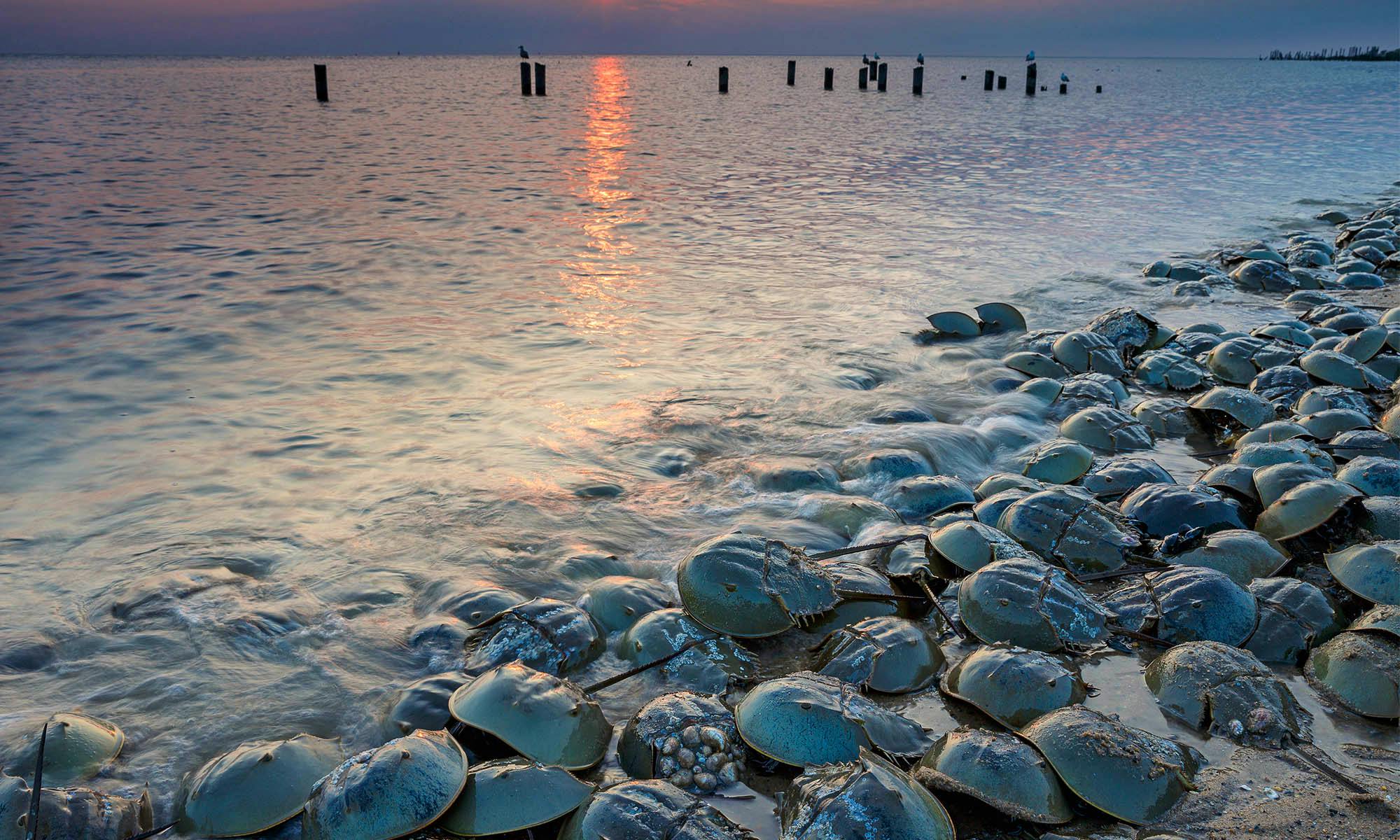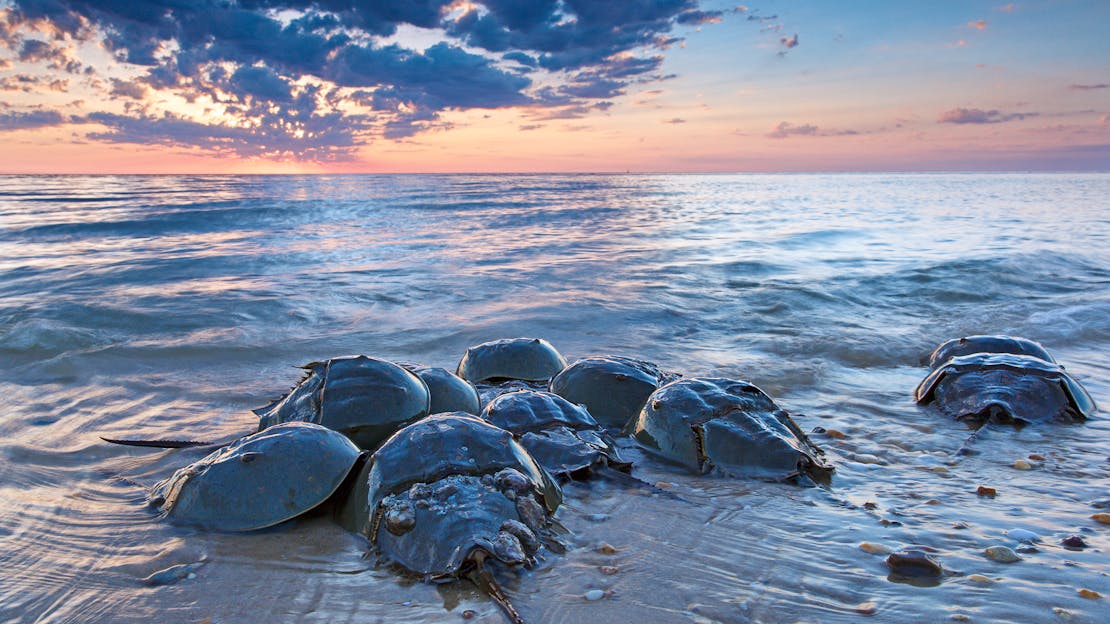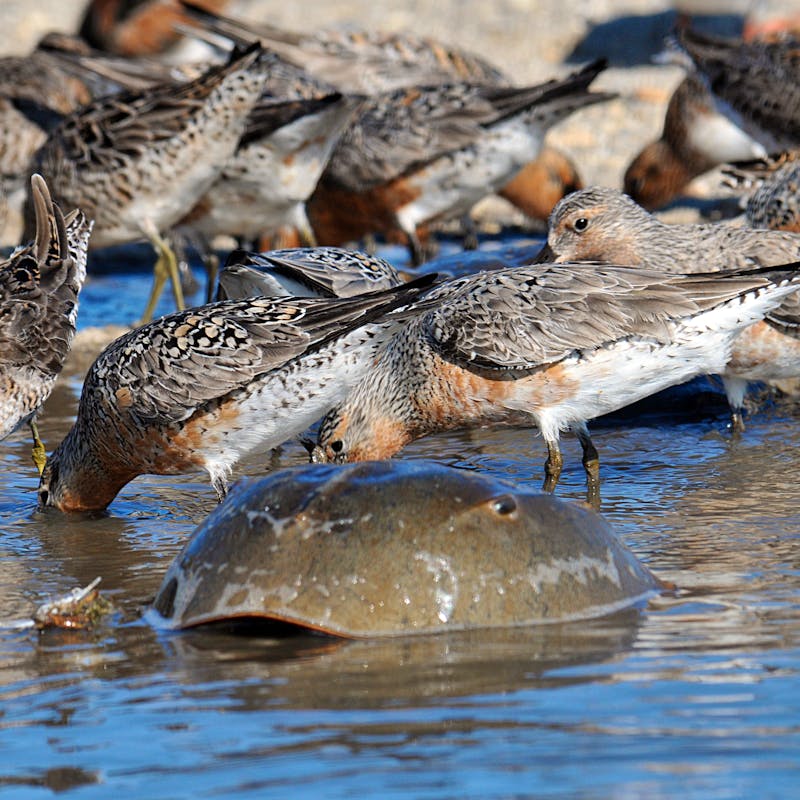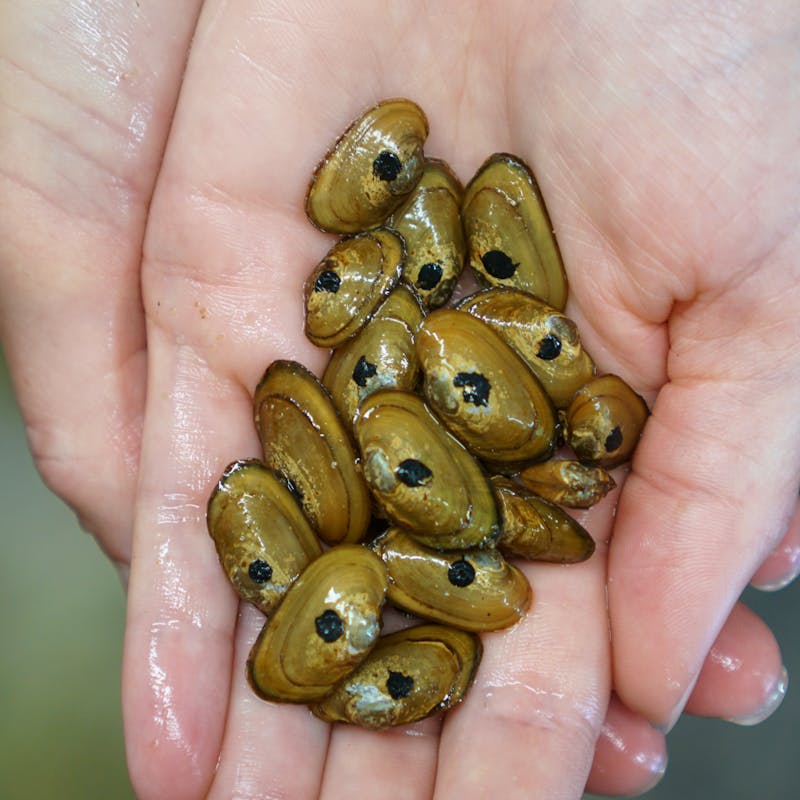Join our mobile Rapid Response Network!
You can be the first to hear about how we’re going to hold this administration accountable and how you can fight back for wildlife!
American horseshoe crabs are living fossils, surviving for hundreds of millions of years in the depths of the ocean through five mass extinction events. Not true crabs, horseshoe crabs are closely related to arachnids, sporting a hard carapace over their bodies and a tail-like feature called a telson, which is used as a rudder and to help flip themselves over if they end upon their backs.
Though they are a resilient species, their population numbers are either dwindling or being maintained at impoverished levels, which is concerning for the fish, reptiles and birds that rely on horseshoe crab eggs and adult crabs alike for food. Overharvest and exploitation by the biomedical and bait fishing industries have suppressed horseshoe crab populations. Roughly 700,000 horseshoe crabs are taken from beaches during the spawning season and forcibly bled to obtain their blue blood for biomedical purposes. Though survivors are returned to the sea, up to 30% of bled crabs can die.
Habitat loss, with coastal development and shoreline erosion, as well as overharvesting pose some of the greatest threats to Atlantic horseshoe crabs.
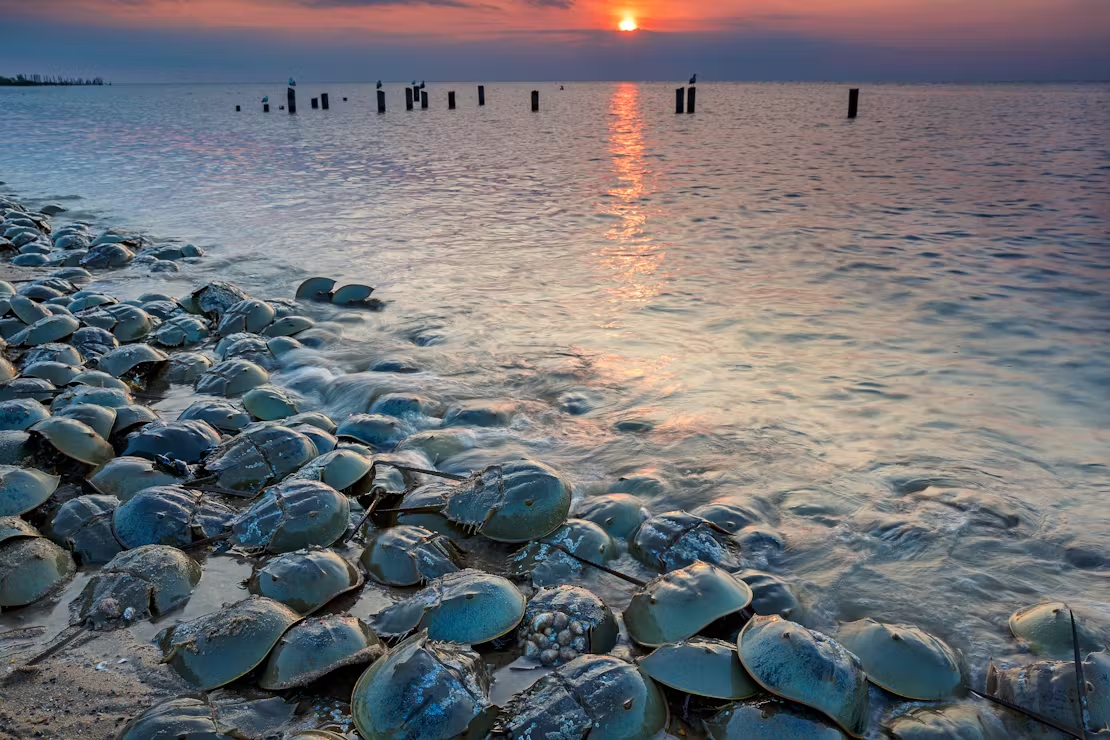
Defenders' Impact
Defenders is a member of the Horseshoe Crab Recovery Coalition, an alliance of national, state and local organizations working to recover horseshoe crab populations by 2030.
We are also actively pursuing the protection of key spawning habitats, such as those within the National Wildlife Refuge System. To that end, we successfully litigated over the illicit harvesting of horseshoe crabs from Cape Romain National Wildlife Refuge, near Charleston, South Carolina. We are also advocating for the widespread adoption of the synthetic alternative to horseshoe crab blood, which would spare millions of crabs from the bleeding process.
What You Can Do
Flip overturned horseshoe crabs that you find on the beach, support coastal restoration efforts, obey all posted signs on beaches and help to keep trash out of the ocean.
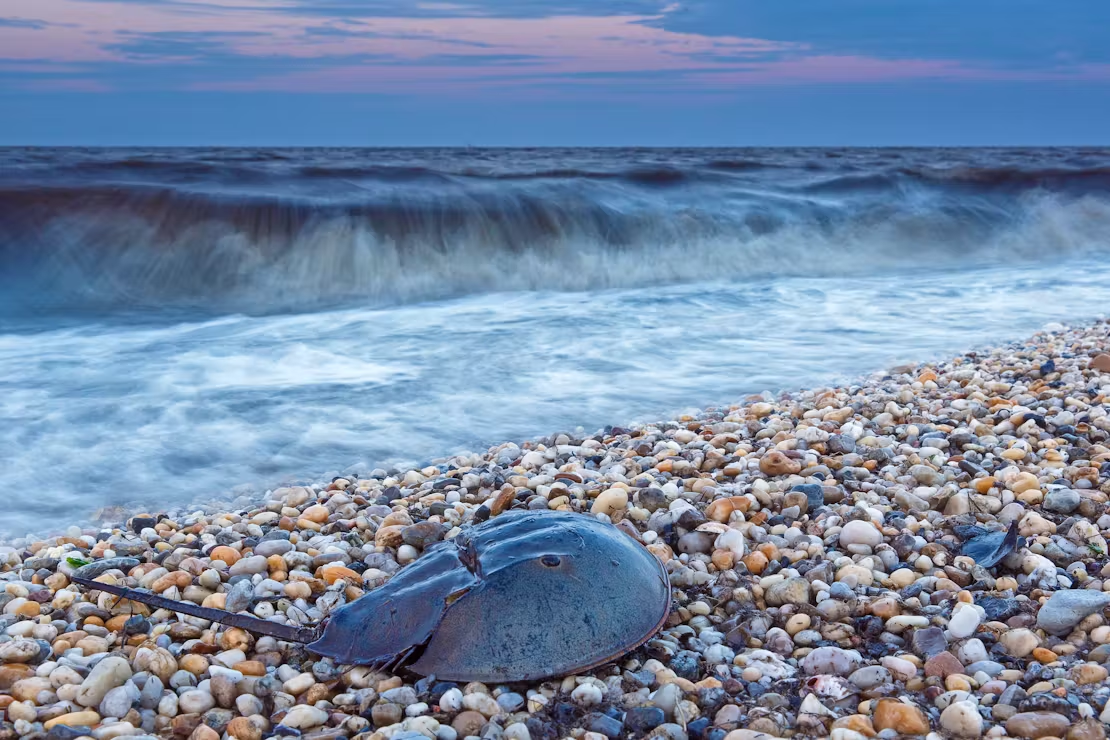
About
Horseshoe crabs spawn along the East and Gulf coasts of the United States and Mexico. Horseshoe crabs can be found in sandy mud flats and shallow brackish waters, but they also feed in deeper waters offshore.
Horseshoe crabs go through 16 or 17 molts during their development and reach adulthood at 10 years. Most often, horseshoe crabs crawl along the ocean floor, but they can and do swim and use their telsons as rudders.
Horseshoe crabs move from the open ocean to the coasts at night to breed during full moons and high tides. Females release pheromones to attract the males when it is time to mate and dig small nests to deposit their eggs. Males then fertilize the eggs.
Horseshoe crabs eat worms, clams and other mollusks, some fish and algae along the ocean floor.
News

